On View
See How Depictions of Childhood Have Changed Throughout Art History
Our ideas about how children should look and behave have evolved over the centuries.
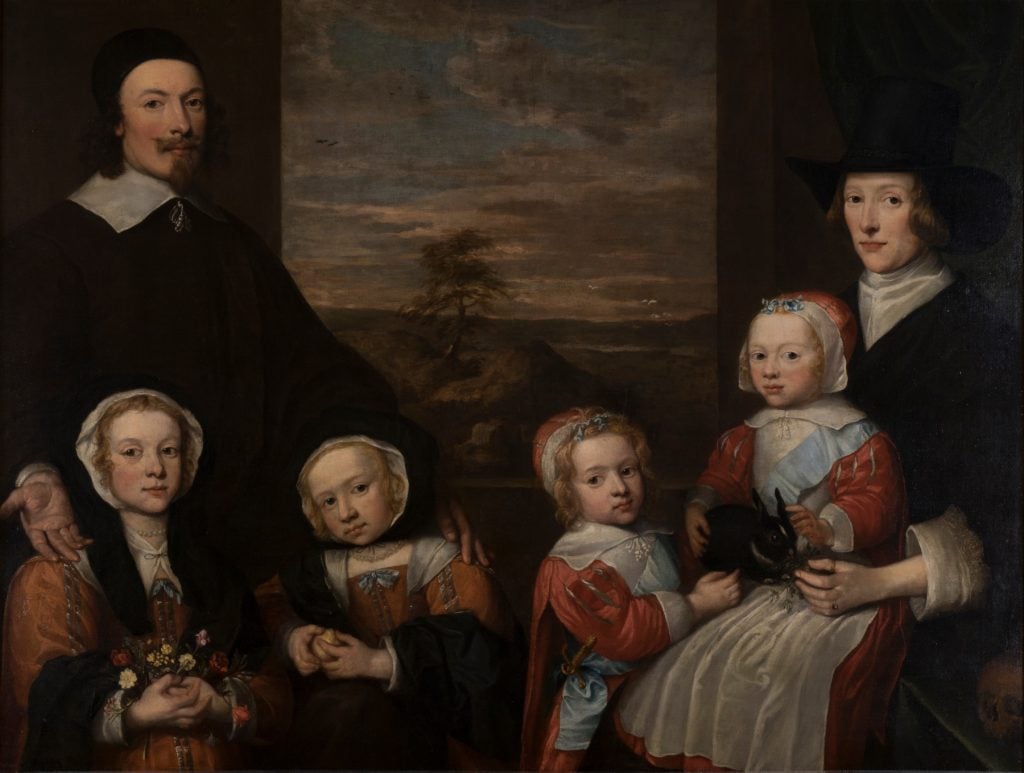
Our ideas about how children should look and behave have evolved over the centuries.

Jo Lawson-Tancred

So many aspects of childhood feel universal, from school-yard games like hopscotch and hide-and-seek to getting in trouble with rule-obsessed adults. But how did children’s experiences differ between the Renaissance or the Georgian era? One of the best records we have is the presentation of young people in art, so what insights can we glean from their poses, expressions, or roles within an image?
These are some of the questions addressed by “Picturing Childhood,” a new exhibition at Chatsworth, a historic country house in the U.K.’s Peak District that has belonged to the Devonshire family for generations. Works spanning from the Tudor times to the present day by artists like Raphael, Anthony van Dyck, and Lucian Feud have been paired with precious archival objects, like an 18th century baby carriage and a Victorian silver christening set.
According to curator Gill Hart, members of the public visiting the show have marveled out loud at the differences in representations of childhood across the centuries.
“We’ve been really able to tell visually this story of childhood,” she said. “When we look at old paintings through a specific lens or in terms of our own human experiences, it can make make people who would otherwise walk past these pictures really stop in their tracks. That has been a source of surprise for people.”
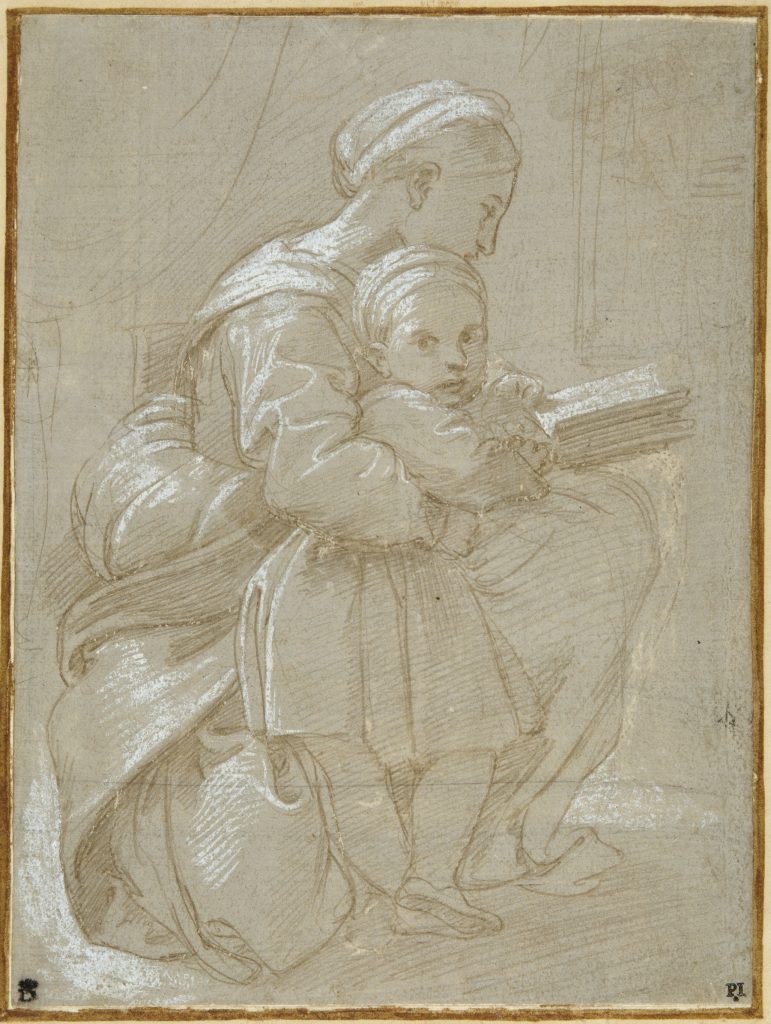
Raphael, A woman seated on a chair reading, with a child standing by her side (1512-14). Courtesy of Chatsworth House Trust.
Among some of the highlights in the show is this scene by Raphael of an infant being read a book by a woman. Though it was made over 500 years ago, it still feels startlingly recognizable today. We can probably instinctively imagine the warm embrace from both the child and the adults’ perspective. It is believed that the Renaissance Old Master included children in his sketches to introduce a human playfulness. The young boy appears distracted and stares out as the viewer with endearing innocence, suggesting a tenderness towards the young even though we know that children at this time were often harshly punished or put to work.
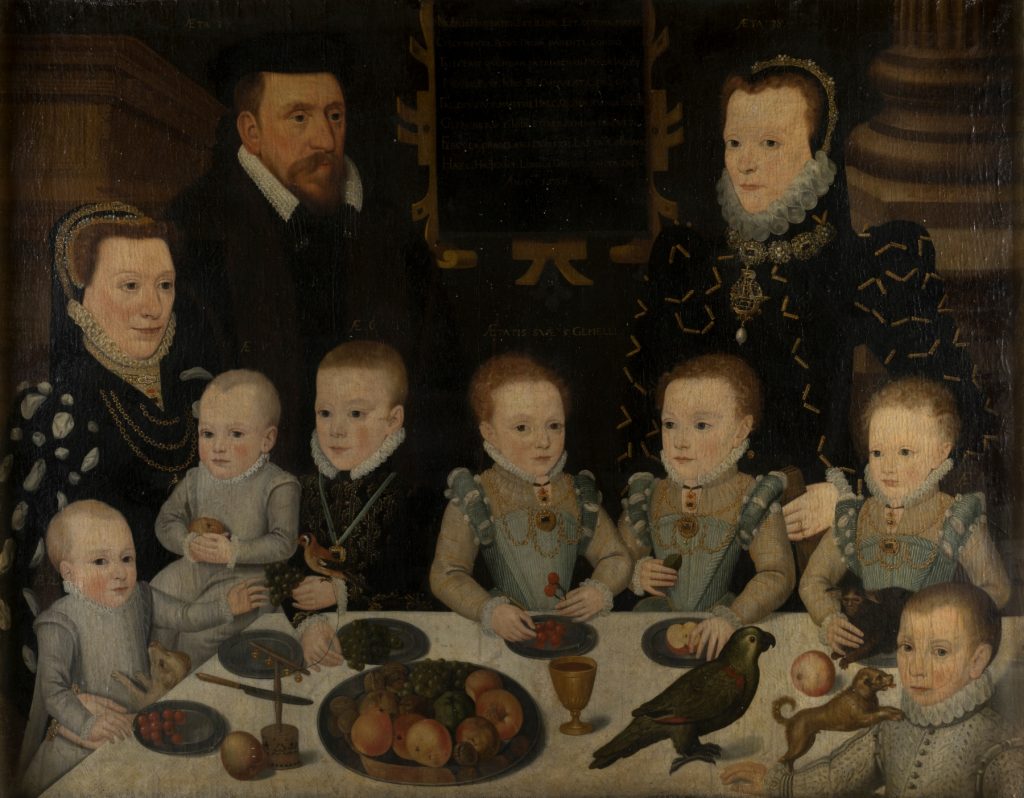
The Master of the Countess of Warwick, William Brooke, 10th Lord Cobham, and family (1567–1580). Courtesy of Chatsworth House Trust.
This large group portrait of William Brook, 10th Lord Cobham, his wife Frances Newton, and her sister Jane contains seven children with their ages inscribed in gold over their heads. In such formal dress with perfect posture and the same placid expressions as their elders, the kids look like miniature adults. The very youngest infant, however, sat on the far left, slightly interrupts the cordial atmosphere by reaching out to perhaps snatch an object from a nearby child.
“The Tudor and Stuart children are very well behaved,” said Hart. “Contrary to what I think has historically been said about childhood, they are like children. They’re dressed in adult clothes but they’re often doing things that betray an element of playfulness.”
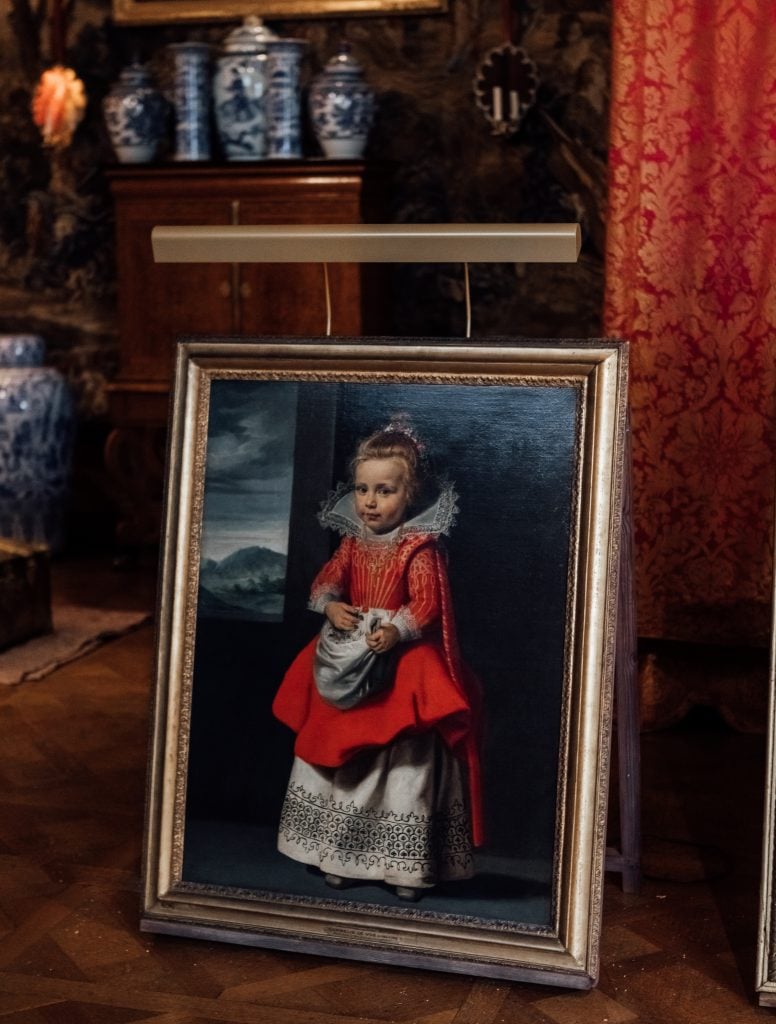
Cornelis de Vos, The artist’s daughter Magdalena de Vos (c. 1623–24) installed at “Picturing Childhood” at Chatsworth. Photo: © Chatsworth House Trust.
The inspiration for “Picturing Childhood,” this painting usually hangs high up on a wall and can easily be missed by visitors. It has been brought down to ground level, so that the subject, the artist Cornelis de Vos’s daughter Magdalena, can be seen eye to eye. She is shown gathering flowers in her apron, and this charming and sensitive painting shows off the Flemish artist’s gift for portraying children.
“When you walk into the state room, she is one of the first things that captures your eye. She holds your stare,” said Hart, who added that most of us are familiar with the experience of “a child, whether you know them or not, locking eyes with you on a train or in a shop queue.”
She compared the look to the boy in the Raphael drawing. “These are gazes that completely transcend time. It hasn’t changed as a stage in the development of a very young child. This little girl has been staring out at us for 400 years.”
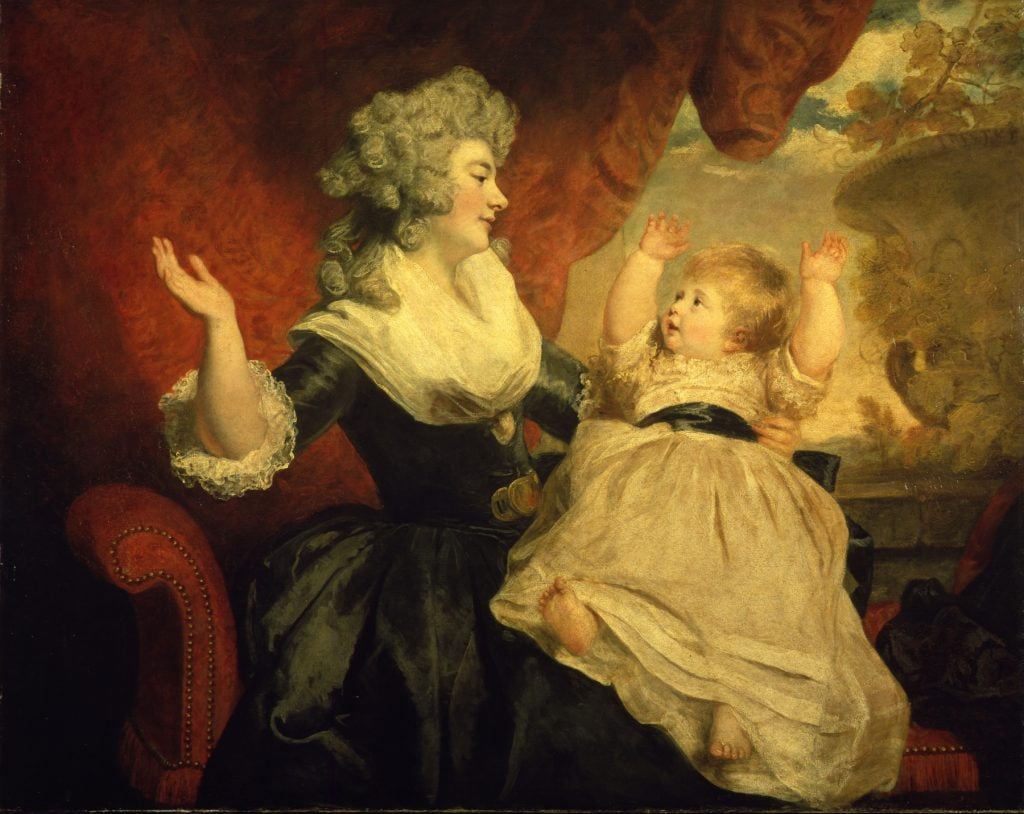
Joshua Reynolds, Portrait of Georgiana Spencer, Duchess of Devonshire with her daughter Lady Georgiana Cavendish, later Countess of Carlisle Sir. (1784). Courtesy of Chatsworth House Trust.
This painting captures a lively interaction between Georgiana, Duchess of Devonshire, and her daughter, in which mother and child communicate in the preverbal stage through eye contact and imitating the same action. Compared to some of the more rigid paintings of the past, the child exhibits easy and lifelike spontaneity.
Of works like these and others by Johann Zoffany, Hart said: “There is a more free and expressive visual representation of childhood. There are [in the show] two wonderful Zoffany loans from Tate Britain where the children are interacting with each other, smiling, they look mischievous and cheeky in a way that isn’t communicated quite so emphatically in the Tudor period.”
The 18th century’s age of the Enlightenment saw the emergence of new, more modern ideas about childhood, such as the Swiss philosopher Jean-Jacques Rousseau’s radical suggestion that children are essentially innocent rather than being born with sin. Natural childlike qualities could therefore be safely encouraged rather than being suppressed.
“Don’t force a child to sit still when it wants to walk or to walk when it wants to sit still,” Rousseau wrote in the novel Émile (1762). “They need to be allowed to jump, run, and yell as much as they want.”
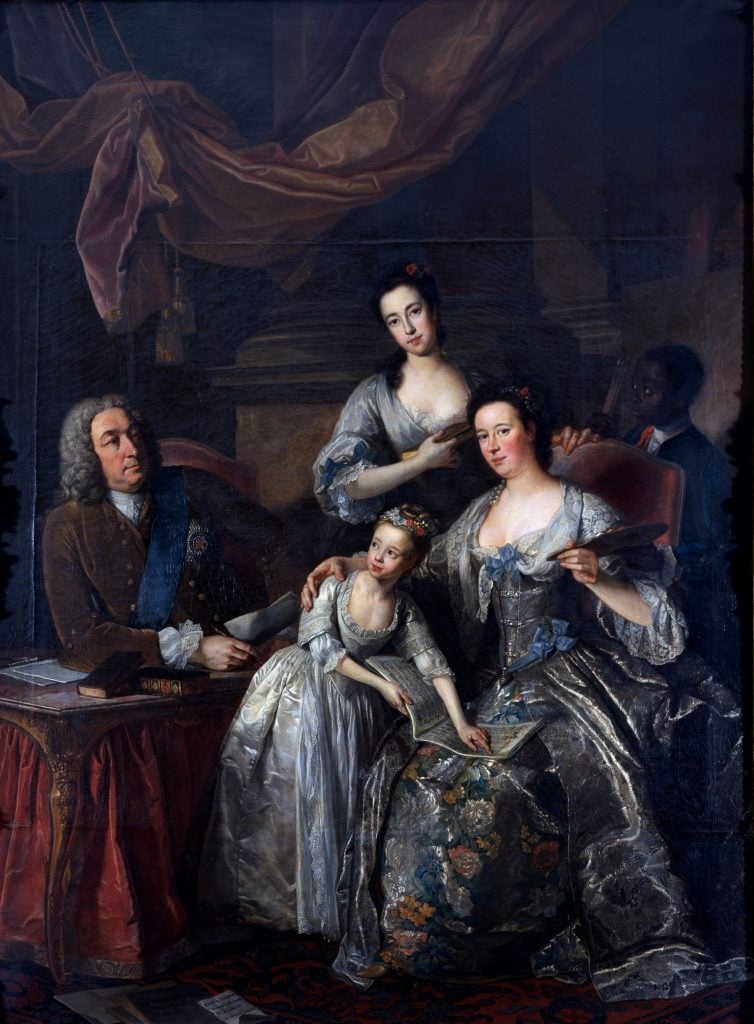
Jean-Baptiste van Loo, Richard Boyle, 3rd Earl of Burlington and 4th Earl of Cork, and His Wife Lady Dorothy Boyle with Three Children (1739). Courtesy of Chatsworth House Trust.
In this painting, the architect and renowned patron of the arts Richard Boyle takes a backseat while the female members of his family are shown to enjoy their own cultural pursuits. The youngest daughter Charlotte looks over to him while reading sheet music and the eldest, Dorothy, stares out pensively, her fingers holding open her place in a book. Their mother, an artist, is holding up a painting palette.
This portrait also brings an entirely new perspective to an exhibition that is otherwise predominantly focused on the lives of white aristocratic children. Little is known about the identity of the young Black boy on the right but, in 2004, an independent scholar identified him as James Cambridge, who was still working for the family in the 1750s. A researcher from the Yale Center for British Art has now been commissioned to find out more about this man’s life and his findings will be presented later this year.
“We have three children whose experiences of childhood will have been very different from each other,” said Hart. “Sometimes we make the mistake of thinking there is nothing new to be said about historical artworks but that is very far from the truth.”
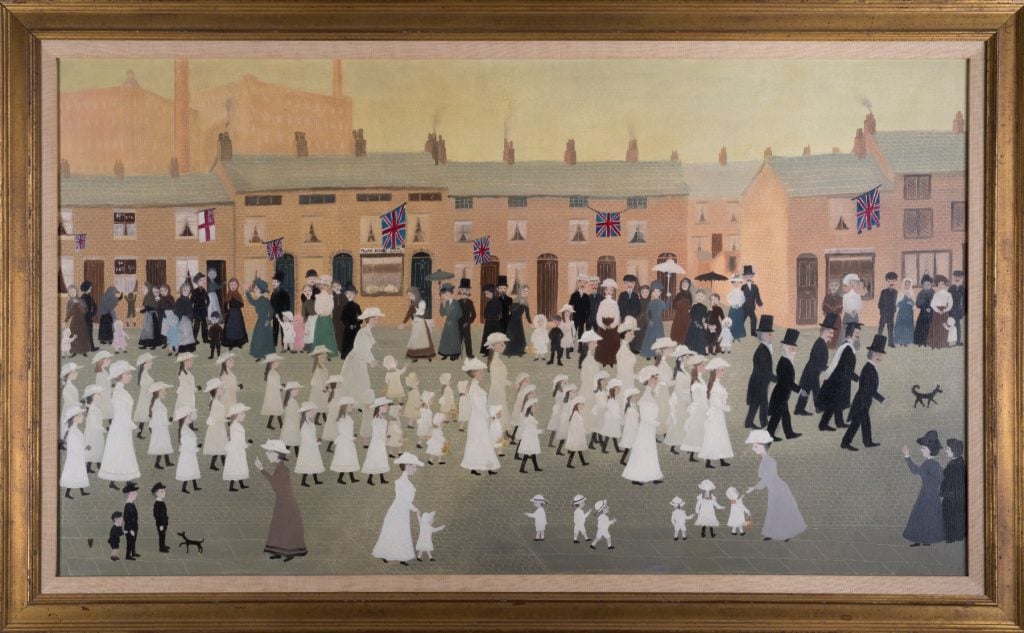
Helen Bradley, The Whitsun Walk Through Lees, 1907 (1968). Courtesy of Chatsworth House Trust.
This painting was made by Helen Bradley based on a childhood memory of the Whitsun Walk, an annual procession of churchgoers wearing their Sunday best through the Whitsun Field in Wales. Being a scene of everyday, working class life sets it apart from many of the works on show
“When selecting it for the exhibition, I’m not sure I realized just how popular it would be,” said Hart. “Helen Bradley didn’t take up painting until she was in her 60s and one of the reasons was that she wanted to show her granddaughter what life was like when she was a little girl. It’s a lovely coda to the exhibition that this intergenerational desire to share histories of childhood between family members and wider audiences is such a strong force in our lives.”
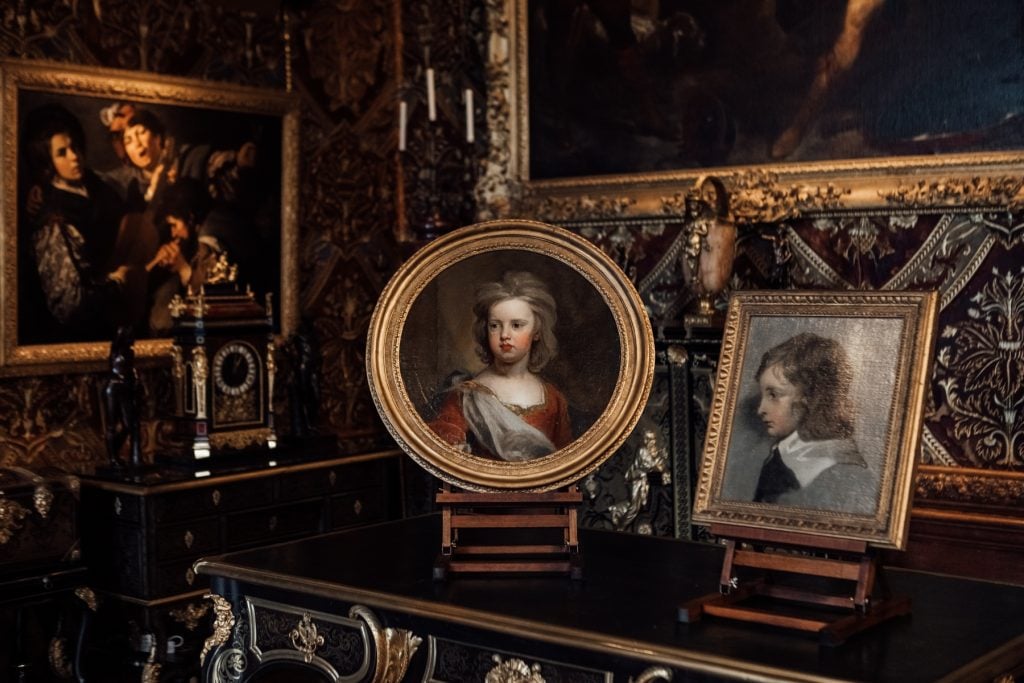
Installation view of “Picturing Childhood” at Chatsworth. Photo: © Chatsworth House Trust.
“Picturing Childhood” is on view through October 6 at Chatsworth House, Bakewell, England.